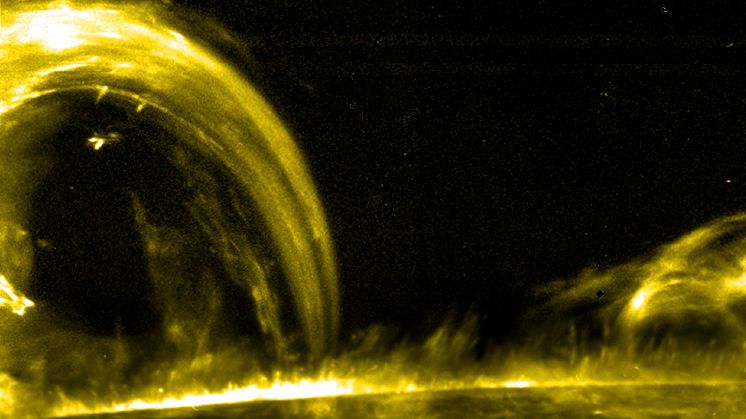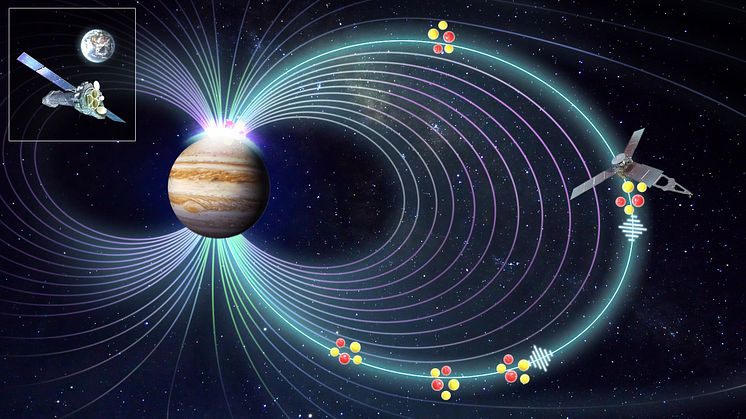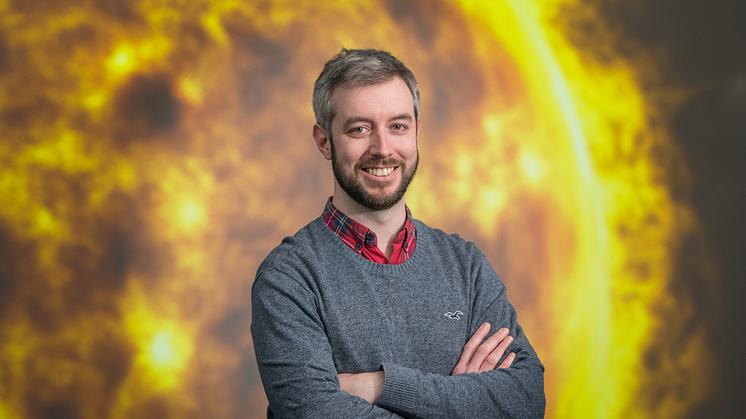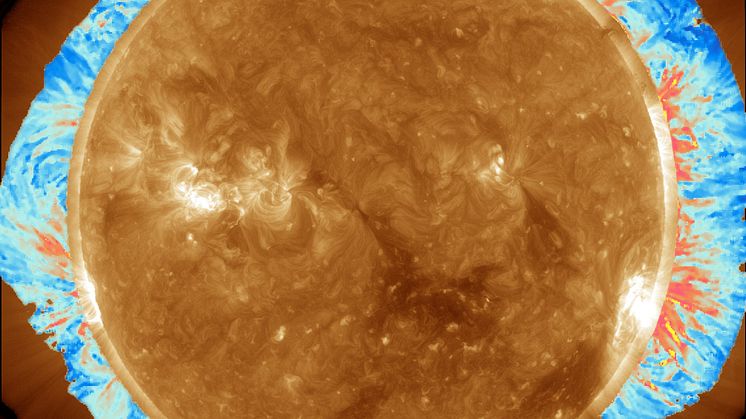
Press release -
Reconnection Nanojets in the Solar Corona: a breakthrough shedding light on the mystery of the Sun’s million-degree atmosphere
A team of scientists has discovered new activity within the Sun’s atmosphere which could explain how it reaches temperatures of more than a million degrees.
The Solar Corona is the outermost part of the Sun’s atmosphere but is hundreds of times hotter than the star’s surface – a mystery which has baffled astronomers and physicists for decades.
Now a team of researchers, led by Dr Patrick Antolin of Northumbria University, has found direct evidence that the reconnection of magnetic field lines within the corona results in characteristic bursts of energy which could account for its high temperature. Their findings have been published in Nature Astronomy.
The surface of the Sun is covered in magnetic fields full of charged particles which form striking features such as coronal loops. These loops connect to the dynamic Sun’s surface, keeping the magnetic lines constantly charged with energy.
Sometimes the field lines become tangled and ‘braided’ together, but then separate and snap back into smoothened lines in a process known as ‘reconnection’. When this happens, a sudden burst of energy occurs known as a ‘nanoflare’. The researchers realised that this process is accompanied by the heated gas moving sideways very quickly between the two lines, creating a ‘nanojet’.
Nanoflare-like bursts of energy have been observed for the last 10 years but never directly connected to coronal heating as the physical origin of small bursts of energy can be manifold. Dr Antolin, along with academics from the University of St Andrews in Scotland, Harvard-Smithsonian Center for Astrophysics in the US, Palermo Astronomical Observatory and Palermo University in Italy, have for the first time been able to detect nanojets alongside nanoflares during a heating episode of the corona, thereby directly identifying magnetic reconnection as the heating mechanism.
Using footage and images from NASA’s Interface Region Imaging Spectrograph (IRIS) telescope, they identified and analysed a nanojet storm, tracking the impact this had on the temperature of the corona.
Speaking about the research, Dr Antolin said: “Misaligned magnetic field lines can break and reconnect, producing nanoflares in avalanche-like processes. However, no direct and unique observations of such nanoflares existed to date, and the lack of a smoking gun had cast doubt on the possibility of solving the coronal heating problem.
“From coordinated multi-band high-resolution observations we discovered evidence of very fast and explosive nanojets, the tell-tale signature of reconnection-based nanoflares resulting in coronal heating.
“Using state-of-the-art numerical simulations, we have demonstrated that the nanojet is a consequence of the slingshot effect from the magnetically tensed, curved magnetic field lines reconnecting at small angles. Nanojets are therefore the key signature to look for reconnection-based coronal heating in action.”
The storm observed by Dr Antolin and his team lasted around 15 minutes. During that time the area of the corona under observation went from being filled with cool plasma to being heated to up to millions of degrees.
The exact conditions which lead to the occurrence of such a nanojet storm are still not clear, however, it is believed the amount of cool plasma within the coronal loop may be partly responsible.
As Dr Antolin explains: “We don’t know exactly what caused this particular reconnection event, however, we believe the build-up of cool plasma in the apex of a coronal loop can cause the loop to sag, putting pressure on the magnetic field and eventually resulting in material spilling from the apex. This then frees up part of the magnetic field, which springs back upwards and reconnects with the overlying magnetic field.”
One of the biggest challenges in discovering more about the heating of the corona is accurately monitoring exactly what is going on within the Sun’s atmosphere – which is around 86.5 million miles from earth.
Dr Antolin and his team used data from the NASA-operated IRIS telescope, which provided the high-resolution images needed to prove their theory.
However, although the reconnection nanojets may explain heating in some areas of the corona, it is acknowledged by the scientific community that there may be a variety of heating mechanisms at work within the corona.
Dr Antolin said: “The solar corona is very diverse so it is likely there are many heating mechanisms. In active regions, the most energy demanding regions, this particular mechanism may dominate because it releases a lot of energy.”
The research paper ‘Reconnection Nanojets in the Solar Corona’ has been published in Nature Astronomy. Dr Antolin has also written a ‘behind the paper’ article in which he explains more about the story behind the research and the challenges faced along the way.
Dr Antolin is an STFC Ernest Rutherford Fellow and member of Northumbria University’s world-class Solar Physics research group, which uses mathematical techniques and cutting-edge computer simulations, as well as the latest high-resolution data from international ground-based and spaced-based instruments, to study dynamical events occurring in the solar atmosphere. This latest published work is part of his project The Cool Alter-Ego of the Hot Solar Corona.
Other members include Dr Richard Morton, who was recently awarded £1.2m through a prestigious 2020 UKRI Future Leader Fellowship for his project Revealing the Pattern of Solar Alfvénic Waves (RiPSAW), which examines the role of magnetic waves in heating the corona and generating powerful solar winds.
Find out more about Northumbria University's Department of Mathematics, Physics and Electrical Engineering.
Topics
Categories
Northumbria is a research-rich, business-focused, professional university with a global reputation for academic excellence. Find out more about us at www.northumbria.ac.uk --- Please contact our Media and Communications team at media.communications@northumbria.ac.uk with any media enquiries or interview requests ---


















